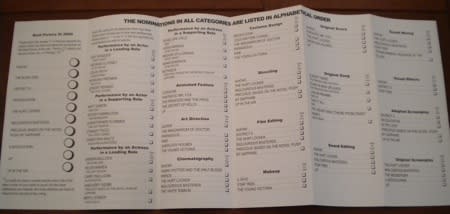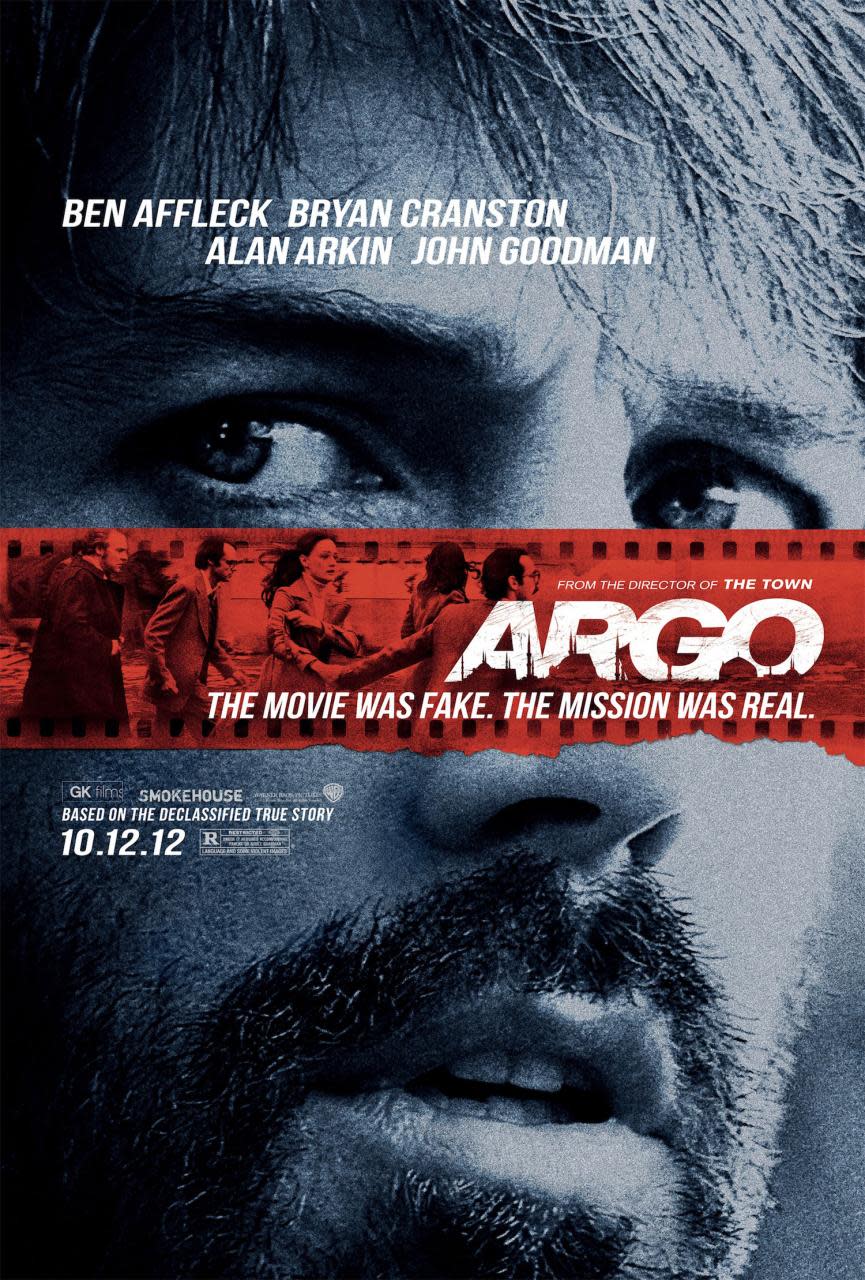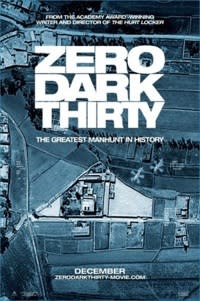An Open Letter to Oscar Voters on Best Picture Race
A while back -- when the choices in Oscar's Best Director category seemingly narrowed the field and the guild awards began to single out a favorite -- one professional Oscar-watcher bemoaned the fallout from the endless handicapping and pontificating.
Voters, he warned, would feel that they'd be wasting their Best Picture ballot unless they voted for "Argo" or "Lincoln" or "Silver Linings Playbook," or one of the small number of movies that was deemed to have a real shot at winning.
A couple of weeks later, after Ben Affleck's movie had continued winning everything in sight (PGA, DGA, SAG, BAFTA ... ), another pundit suggested that the only way for anti-"Argo" voters to stop that film from being named Best Picture was to put "Silver Linings Playbook" at the top of their ballots.
To which I say: Hogwash, on both counts.
I've often written about the intricacies of the Academy's voting process and how the preferential ballot works. But I'm still convinced that most voters don't understand it. And I'm not alone: AMPAS officials have told me in the past that they also suspect the system eludes most Academy members.
So I've said it before, and I'll say it again: The Best Picture ballot allows members to vote without reservation for the movies they think are best, without concern for whether those films have a real chance to win. Please, voters, rank the nominees 1-through-9 in the order you think they deserve; don't play games, and don't try to second-guess the process.
(And by the way, remember that the ballot deadline is next Tuesday at 5 p.m. -- and that if you're voting by paper ballot, Monday is President's Day, a holiday with no mail delivery.)
To explain why you shouldn't worry about playing games or wasting your vote, I'll tell you how I'd fill out the top of my ballot if I had a vote ... which, of course, I don't. I'd rank "Zero Dark Thirty" first, because I think it's far and away the toughest, strongest, most uncompromising film on the ballot.
My second-favorite film of the year, "Beasts of the Southern Wild," would be No. 2, followed by "Silver Linings Playbook" and then "Amour."
Also read: Steve Pond: 'Zero Dark Thirty' and 'Beasts of the Southern Wild' Top My Imaginary Oscar Ballot
Do I expect any of those choices to win? Sadly, no. But what if "ZDT" or "Beasts" really does have a chance, and I'd foolishly downgraded it because I'd been listening to pundits who convinced me that it was out of the running?
The fact is, by placing "ZDT" at No. 1, where I think it belongs, I'm boosting its chances in the only way I can. And if it does fall out of the running, I'm NOT wasting my vote, which will shift down the ballot until it finds the next film that could use my support.
Stop me if you've heard this before, but here's how it works: Under the preferential count that has been used in final Best Picture voting for the past four years, the ballots are put in stacks according to the film ranked first on each ballot. The film with the fewest No. 1 votes is then eliminated and each of its ballots put into the stack of whichever film is listed second on the ballot.
The count goes on and on, with the ballots for the last-place film redistributed in each subsequent round until one stack has more than 50 percent of the ballots. That's your Best Picture winner.
So if I put "Zero Dark Thirty" at No. 1, and after a few rounds it's eliminated, the accountants will look at my No. 2 choice. If "Beasts of the Southern Wild" is still in contention, my ballot will go in that pile; if not, it will go in the pile for my third choice, "Silver Linings Playbook," or my fourth, "Amour," or my top-ranked film that is still in the running.
If your goal is to vote for something that has a real chance of winning, the ballot will eventually get there. If your goal is to stop "Argo," you don't need to place its chief rival in the number one spot -- you only need to rank it above "Argo" anywhere on your ballot.
The preferential system -- also known as Instant Runoff Voting -- essentially starts by asking each voter, "Of these nine Best Picture nominees, which is your favorite?"
Assuming that more than half the voters don't give the same answer, it then eliminates the last-place film and asks, "Of these eight choices, which is your favorite?" And then "Of these seven choices, which is your favorite?"
A ballot that is filled out honestly and fully will be able to answer those questions for as long as they're asked -- which might be all the way down to: "Of the two, which is your favorite, 'Argo' or 'Silver Linings Playbook'?" (The question could also be "…'Argo' or 'Lincoln'?" or "…'Life of Pi' or 'Zero Dark Thirty'?" or any other combination -- and if one film proves to be very popular, the count could end before the field is narrowed down to two contenders.)
The point is, don't listen to anybody who says that only two or three or four films are still in the running, or that you have to cast your vote a certain way to make your ballot effective.
When you sit down to fill out your ballot, nine movies -- all of them pretty good and many of them pretty great -- are in the race for Best Picture. You owe it to those nine films to treat them all as if they're true contenders.
Do that, and you'll never waste your vote.
Related Articles:
'Argo' Adds to Its Awards Haul, Wins BAFTAs
Steve Pond: 'Zero Dark Thirty' and 'Beasts of the Southern Wild' Top My Imaginary Oscar Ballot
How David O. Russell 'Grew Up' to Become the Ultimate Actors' Director
Oscar Voting Finally Begins - What Will the 29-Day Gap Mean?



